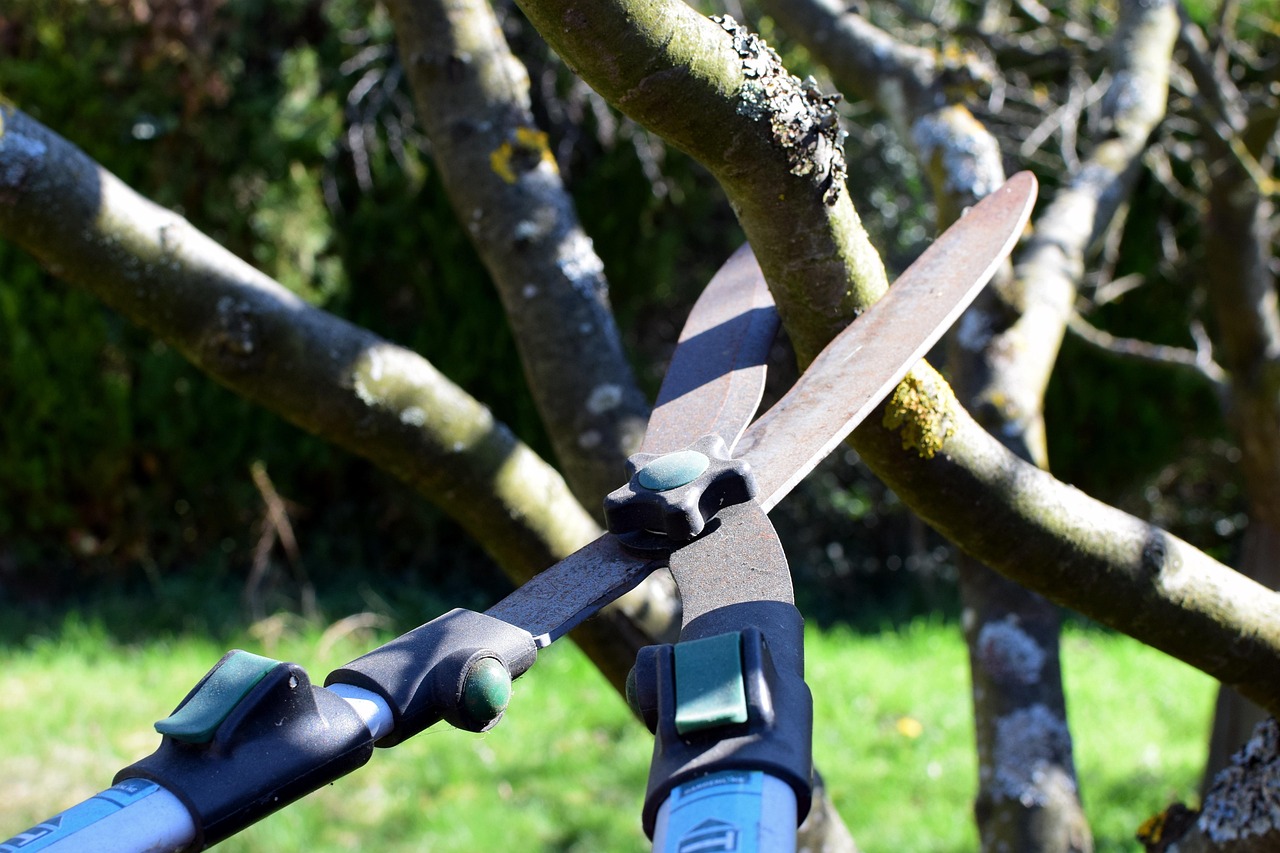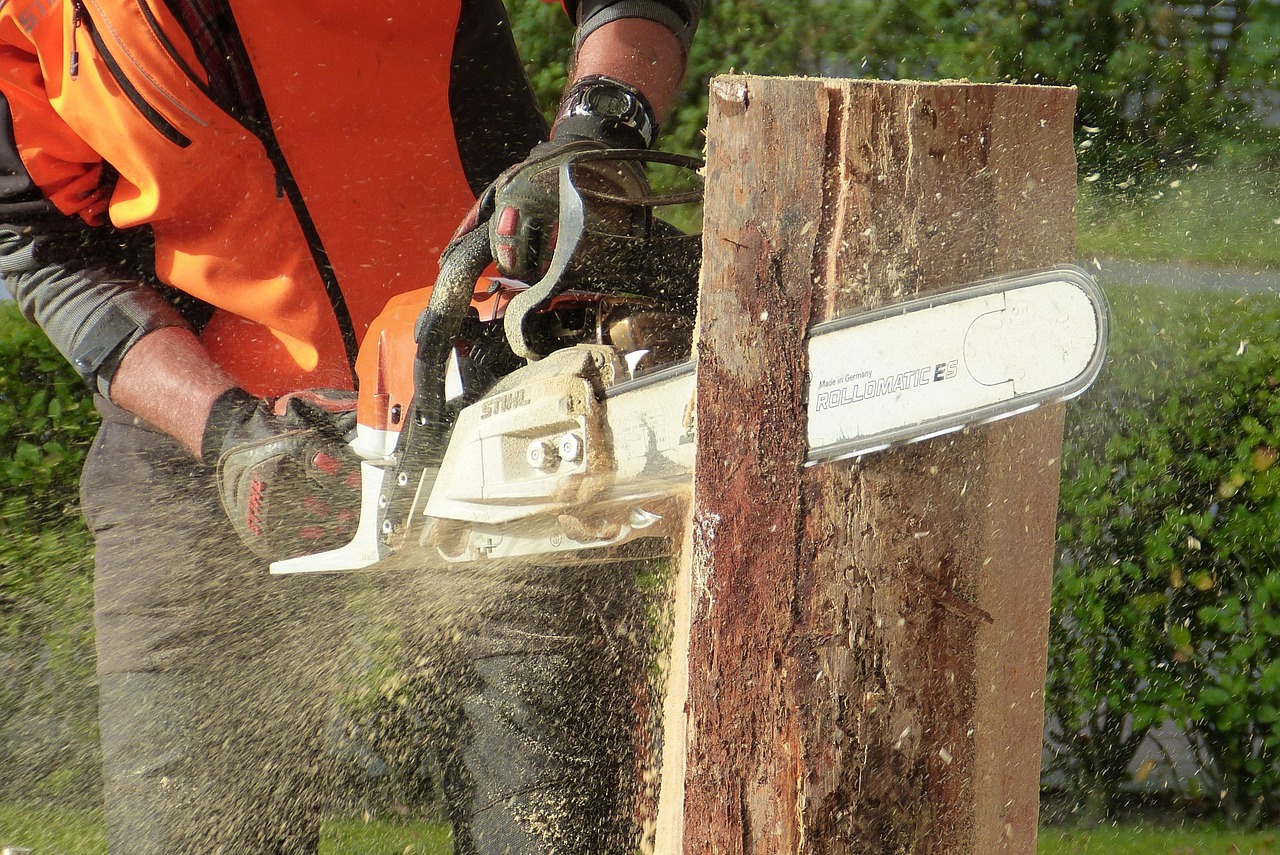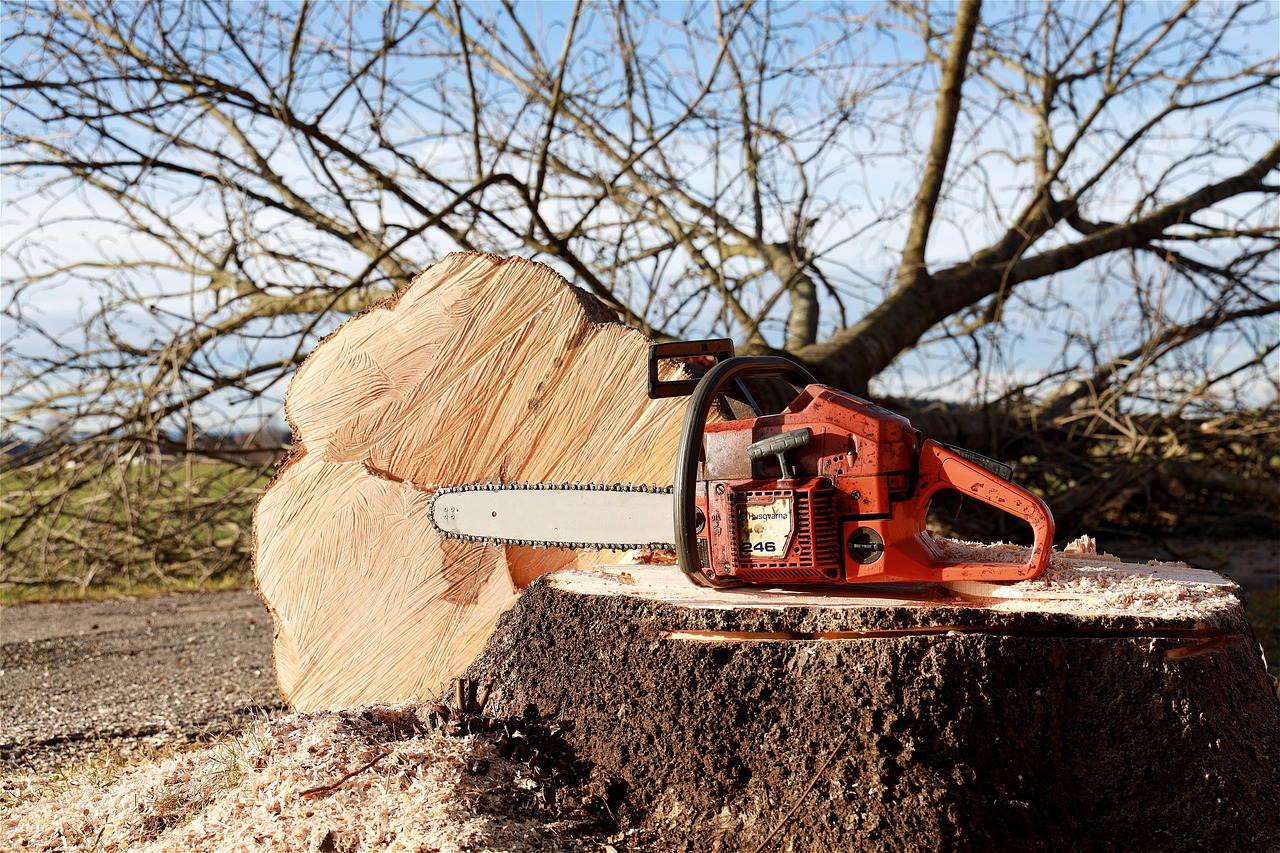Common challenges in tropical and exotic tree pruning include the unique growth patterns of these species, climatic conditions, pest infestations, and the lack of knowledge among pruners about specific tree needs.
Tropical and exotic trees are often prized for their beauty and unique characteristics. However, pruning these trees poses significant challenges. Unlike temperate trees, tropical and exotic species can exhibit rapid growth, diverse branching structures, and varying responses to pruning techniques. Understanding these characteristics is essential for successful pruning.

The primary challenges associated with pruning tropical and exotic trees can be attributed to several factors. These include environmental conditions, tree biology, and the specific management practices used. It is crucial for arborists and gardeners to be aware of these challenges to ensure healthy tree growth while maintaining the aesthetic appeal of their landscapes.
Key Challenges in Tropical and Exotic Tree Pruning
Several common challenges can arise when pruning tropical and exotic trees:
- Rapid Growth Rates: Many tropical trees grow quickly, leading to the need for more frequent pruning.
- Diverse Growth Forms: Exotic trees may have unique branching structures that require tailored pruning techniques.
- Environmental Conditions: High humidity and temperatures can affect tree health and growth patterns.
- Pest Infestation: Tropical trees are often prone to pests that can complicate pruning efforts.
- Lack of Knowledge: Many practitioners may not have adequate training in the specific requirements of tropical and exotic species.
Understanding these factors is vital for anyone involved in tree care. Each species may have specific needs or responses to pruning, making it essential to conduct thorough research before undertaking any pruning task. Additionally, local climate conditions play a significant role in how these trees grow and respond to care.

Growth Patterns of Tropical and Exotic Trees
The growth patterns of tropical and exotic trees can vary widely. Many of these trees grow in dense forests where competition for sunlight drives them to develop unique branching structures. This can make pruning particularly challenging, as cutting too much can lead to unintended consequences, such as stunted growth or increased susceptibility to disease.
Some important aspects of these growth patterns include:
- Canopy Structure: The canopy may be layered or irregular, impacting how light penetrates the tree.
- Branching Angles: Branches can grow at unusual angles, complicating cuts and shaping.
- Height Variability: Many tropical trees can reach significant heights quickly, requiring specialized equipment for safe pruning.
This variability necessitates a careful approach when deciding how and when to prune these trees. Failing to consider their unique growth characteristics can lead to poor outcomes for both the tree and the surrounding environment.

Environmental Factors Influencing Pruning
The environment plays a crucial role in the health and growth of tropical and exotic trees. Factors such as temperature, humidity, and rainfall patterns can significantly influence tree behavior and growth rates. For instance, high humidity may encourage mold or fungal infections, while excessive heat can stress the tree.
Some environmental considerations include:
- Soil Quality: Nutrient-rich soils often promote better growth but may also require more frequent pruning.
- Water Availability: Trees in drought-prone areas may respond differently to pruning than those in wetter environments.
- Seasonal Changes: Understanding local seasons helps determine the best times for pruning activities.
A thorough understanding of these environmental factors can improve pruning outcomes. It allows practitioners to choose the right time for cuts, ensuring that trees remain healthy while also achieving desired shapes or sizes.

Pest Management During Pruning
Pest infestations are another challenge faced by those pruning tropical and exotic trees. These trees may attract various pests that can hinder their growth or damage their health. Effective pest management is essential during the pruning process to avoid exacerbating existing issues.
The following strategies can help manage pests effectively:
- Regular Monitoring: Keeping an eye on tree health can help identify pest problems early.
- Integrated Pest Management (IPM): Employing IPM practices can reduce the need for chemical treatments.
- Proper Sanitation: Cleaning tools between cuts can help prevent the spread of pests from tree to tree.
By addressing pest issues proactively during pruning, tree health can be maintained, leading to better overall outcomes for tropical and exotic species.
Pruning Techniques for Tropical and Exotic Trees
When it comes to pruning tropical and exotic trees, understanding the specific techniques suited for these species is crucial. Each tree type may require different methods to ensure healthy growth and minimize damage. Here are some common pruning techniques used for these trees:
- Thinning: This technique involves selectively removing branches to improve light penetration and air circulation. It helps in reducing the overall density of the canopy.
- Heading: Heading cuts shorten branches by cutting them back to a lateral bud. This method encourages bushier growth but should be used cautiously to avoid stress.
- Reduction: Reduction pruning reduces the height and spread of a tree while maintaining its natural shape. This is often necessary for trees that grow too large for their space.
- Cleaning: This involves removing dead, damaged, or diseased branches. Regular cleaning helps maintain tree health and aesthetics.
Factors Influencing Pruning Techniques
Choosing the right pruning technique depends on several factors, including:
- Species Characteristics: Different species respond differently to pruning. Researching specific needs is essential.
- Growth Stage: Young trees may need different techniques compared to mature trees. Young trees often require formative pruning.
- Environmental Conditions: The local environment can affect how trees grow and respond to pruning. Adaptability is key.
Properly applying these techniques can enhance the health and appearance of tropical and exotic trees, ensuring they thrive in their environments.
Timing: When to Prune Tropical and Exotic Trees
The timing of pruning is vital for tropical and exotic trees. Unlike temperate species, which often have defined dormant seasons, tropical trees may not follow the same patterns due to varying climates. Understanding when to prune can help avoid damaging the tree or compromising its health.
- Growing Season: Pruning during active growth can stimulate new growth but may also expose the tree to stress if not done carefully.
- Dormant Periods: For some species, late fall or winter can be ideal for pruning, as trees are less active and can recover more easily.
- Post-Blooming: Pruning after flowering can help promote better bloom production in the following season.
Understanding the optimal time for pruning each species can enhance tree resilience and encourage robust growth patterns.
The Role of Tools in Tropical and Exotic Tree Pruning
The right tools are essential for effective pruning of tropical and exotic trees. Using appropriate tools not only ensures cleaner cuts but also minimizes stress on the trees. Here are some commonly used tools:
- Hand Pruners: Ideal for small branches and detailed work, hand pruners are essential for precise cuts.
- Loppers: These are used for thicker branches that are too large for hand pruners. They provide leverage for easier cutting.
- Saws: For larger limbs, a pruning saw or chainsaw is necessary. These tools help make clean cuts without damaging the tree.
- Pole Pruners: Useful for reaching high branches without climbing, pole pruners allow for safe cutting from the ground.
Ensuring tools are sharp and well-maintained is crucial for making effective cuts. Dull tools can cause tearing, leading to potential health issues for the tree.
Safety Considerations During Pruning
Pruning can pose risks, especially when working with larger trees or using power tools. Keeping safety in mind is essential to prevent accidents. Some safety considerations include:
- Wear Protective Gear: Safety goggles, gloves, and helmets should be worn to protect against falling debris and sharp tools.
- Assess Surroundings: Before starting, evaluate the area for potential hazards such as overhead power lines or unstable branches.
- Use Proper Techniques: Employ correct cutting techniques and body positioning to avoid injuries.
Practicing safety measures helps ensure a smooth pruning process while protecting both the individual performing the work and the surrounding environment.
Cultural Practices Impacting Tree Health
Cultural practices play a significant role in the overall health of tropical and exotic trees. These practices can support proper growth and development, enhancing the effectiveness of pruning efforts. Some important cultural practices include:
- Watering: Adequate watering is essential, especially during dry spells. Proper hydration supports healthy growth and recovery post-pruning.
- Nutrient Management: Providing appropriate fertilizers can enhance growth rates and improve tree resilience against pests and diseases.
- Pest Control Measures: Implementing preventative pest control measures can minimize infestations before they become problematic.
A holistic approach that incorporates cultural practices alongside pruning techniques will yield healthier tropical and exotic trees in the long run.
Identifying and Managing Diseases in Tropical and Exotic Trees
Diseases can pose significant challenges to the health of tropical and exotic trees. Understanding how to identify and manage these diseases is vital for maintaining tree vitality and ensuring successful pruning efforts.
Common Diseases Affecting Tropical and Exotic Trees
Several diseases commonly affect tropical and exotic trees, each requiring specific management strategies. Here are some notable examples:
- Fungal Infections: Fungi can cause leaf spots, root rot, and trunk decay. Identifying symptoms early can help manage the spread.
- Bacterial Blights: These can lead to wilting, leaf drop, and overall decline. Bacterial infections often require sanitation practices to control.
- Viral Diseases: Viruses can cause stunted growth and abnormal leaf patterns. Prevention is key, as there are often no effective treatments.
Regular monitoring for signs of these diseases can help in implementing timely management practices. This includes observing changes in foliage color, growth patterns, and overall tree health.
Management Strategies for Tree Diseases
To effectively manage diseases in tropical and exotic trees, consider the following strategies:
- Early Detection: Regular inspections can help spot disease symptoms before they spread.
- Sanitation: Remove and dispose of infected plant material to reduce the risk of disease spread.
- Cultural Controls: Practices such as proper watering, fertilization, and avoiding overcrowding can enhance tree resilience against diseases.
- Pesticides and Fungicides: When necessary, using appropriate chemical treatments can help manage outbreaks. Always follow label instructions for safe application.
By implementing these management strategies, tree health can be preserved, allowing them to recover from pruning more effectively.
The Importance of Training and Education
Training and education are critical components for successful pruning of tropical and exotic trees. Proper knowledge ensures that practitioners understand the unique needs of different tree species and the best practices for care.
Benefits of Arborist Training
Investing in training programs for arborists or tree care professionals offers numerous benefits:
- Improved Skills: Training enhances pruning skills and techniques tailored for tropical and exotic species.
- Knowledge of Best Practices: Professionals learn about the latest research and methods in tree care.
- Safety Awareness: Education emphasizes safety protocols, reducing injury risks during pruning operations.
Having trained professionals carry out pruning can ensure better outcomes for the trees involved. Proper techniques minimize stress and promote healthy growth post-pruning.
Resources for Learning
A variety of resources are available for those looking to gain knowledge about tree care, including:
- Workshops and Seminars: Local botanical gardens or agricultural extensions often host events focused on tree care.
- Online Courses: Many universities and organizations offer online classes covering tree biology, pest management, and pruning techniques.
- Literature and Guides: Books, journals, and online articles provide valuable insights into tropical and exotic tree care.
Utilizing these resources can significantly enhance one’s understanding of the complexities involved in pruning tropical and exotic trees.
Community Involvement in Tree Care
Community involvement can play an essential role in the health of local tropical and exotic tree populations. Engaging the community fosters awareness and encourages collective action towards tree care initiatives.
Community Programs and Initiatives
Communities can organize various programs to promote tree health and educate residents about the importance of proper care:
- Tree Planting Days: Organizing events to plant new trees can enhance local green spaces while educating participants about species selection and placement.
- Pruning Workshops: Hands-on workshops allow community members to learn about proper pruning techniques while contributing to local tree maintenance.
- Pest Management Campaigns: Initiatives aimed at educating residents about pest identification and management can help prevent infestations from spreading.
Through collective efforts, communities can create a supportive environment for tropical and exotic trees. These initiatives not only improve tree health but also foster a sense of connection among residents regarding their local ecosystems.
The Role of Technology in Tree Care
The use of technology in tree care has advanced significantly, providing tools that enhance the effectiveness of pruning and overall tree management. Embracing technology can help arborists make informed decisions about their practices.
Technological Tools for Arborists
Several technological advancements have become beneficial for tree care professionals:
- Drones: Drones are used for aerial surveys, allowing arborists to assess tree health from above. This is particularly useful for large areas or hard-to-reach locations.
- Mobile Apps: Various applications exist to assist in plant identification, pest management, and scheduling maintenance tasks.
- Sensors: Soil moisture sensors or weather stations can provide real-time data to help manage irrigation and other cultural practices effectively.
Incorporating technology into tree care practices allows for improved efficiency and accuracy in managing tropical and exotic species. By leveraging these tools, arborists can enhance their effectiveness in maintaining tree health through proper pruning techniques.
Future Considerations for Tropical and Exotic Tree Pruning
As the demands for urban greening and the preservation of biodiversity increase, the methods and practices related to tropical and exotic tree pruning will continue to evolve. Understanding emerging trends and future considerations can help arborists and tree care professionals stay ahead of challenges.
Climate Change Impacts
Climate change is anticipated to significantly influence tree care practices. Factors such as rising temperatures, changing precipitation patterns, and increased frequency of extreme weather events can alter the growth patterns and health of tropical and exotic trees.
- Adapting Pruning Practices: Arborists may need to adjust their pruning schedules and techniques based on new growth patterns or stress indicators caused by climate fluctuations.
- Species Selection: As some species may struggle to thrive under new climatic conditions, selecting more resilient or adaptable species for urban areas will become crucial.
- Water Management: Effective irrigation strategies will be necessary to address altered rainfall patterns and ensure that trees receive adequate hydration.
Being proactive about these changes will help maintain healthy tropical and exotic tree populations in the face of climate uncertainty.
Community Engagement and Education
Fostering community involvement in tree care is vital for long-term sustainability. Educational programs can empower local residents with knowledge about the importance of proper pruning and tree maintenance.
- Outreach Programs: Developing outreach initiatives that target schools, community centers, and local organizations can raise awareness about tree care.
- Volunteer Opportunities: Encouraging community members to participate in tree care activities, such as pruning workshops or tree planting events, can enhance local engagement.
- Partnerships with Local Governments: Collaborating with municipal agencies can lead to more organized tree care efforts and funding for educational programs.
When communities understand the role of trees in their environment, they are more likely to engage in practices that promote tree health.
Research and Innovations
Continued research into tropical and exotic trees will lead to innovations in pruning techniques and tree care practices. Emerging studies may provide insights into how different species respond to various pruning methods or environmental stressors.
- Genetic Studies: Research into the genetics of tropical tree species may help identify traits that enhance resilience to pests, diseases, or climate variability.
- Improved Tools: Innovations in pruning tools, such as ergonomic designs or automated cutting devices, can improve efficiency and safety for arborists.
- Pest Management Research: Ongoing studies into pest control methods can lead to more effective strategies for managing infestations while minimizing chemical use.
Staying informed about research findings will enable arborists to apply the latest knowledge to their practices, resulting in healthier trees and landscapes.
Conclusion
Pruning tropical and exotic trees comes with a unique set of challenges that require specialized knowledge and skills. From understanding species-specific growth patterns to implementing effective pest management strategies, successful pruning is essential for maintaining vibrant trees in diverse environments.
The integration of technology, community involvement, and continuous learning will play a crucial role in enhancing tree care practices. As we navigate the complexities of climate change and urbanization, it is vital to adopt a holistic approach that encompasses not only technical skills but also a strong commitment to education and community engagement.
By embracing these principles, arborists and tree care professionals can ensure that tropical and exotic trees thrive for generations to come, contributing positively to our ecosystems and enhancing the beauty of our landscapes.
